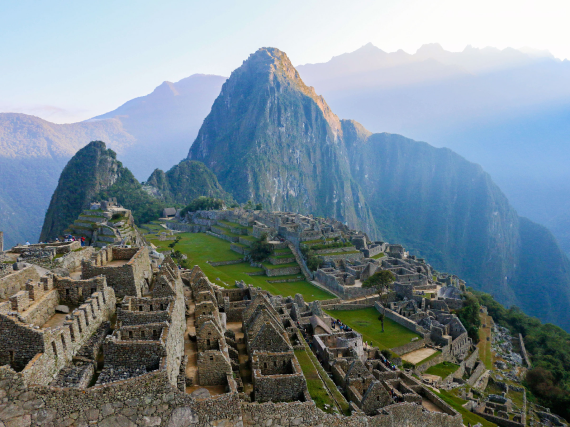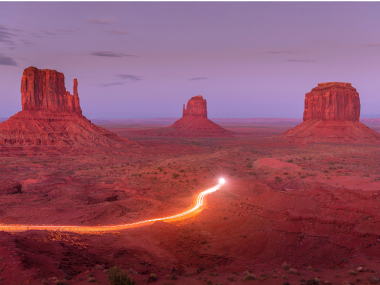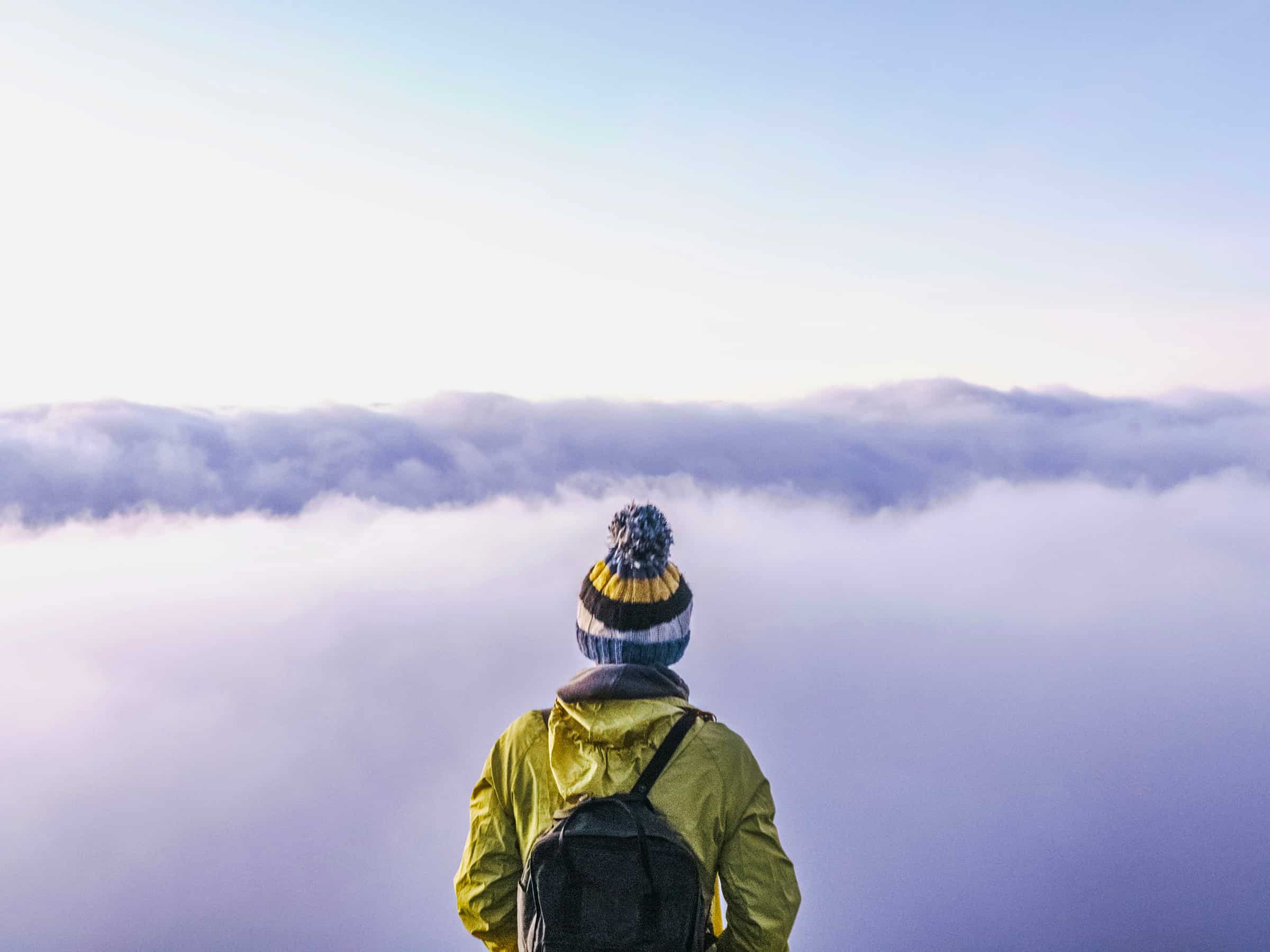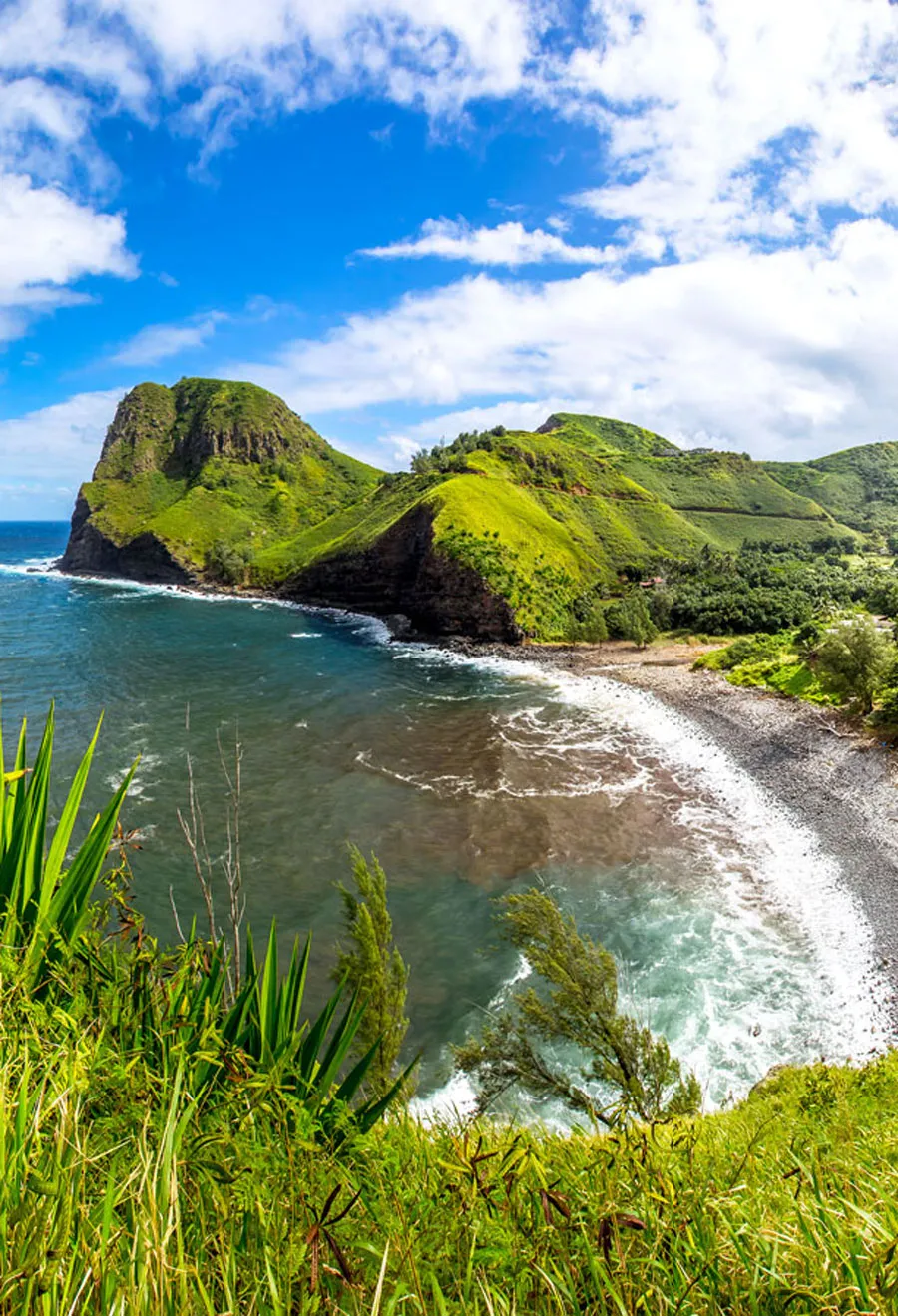Who doesn’t love an island getaway? While you’ve surely heard of the likes of America’s biggest and most famous islands — the likes of Hawaii, the Florida Keys, and Puerto Rico — there are countless other, lesser-known U.S. islands waiting to be discovered. Here’s a fascinating peek at 10 underrated U.S. islands and why they’re worth visiting.
St. George Island – Florida
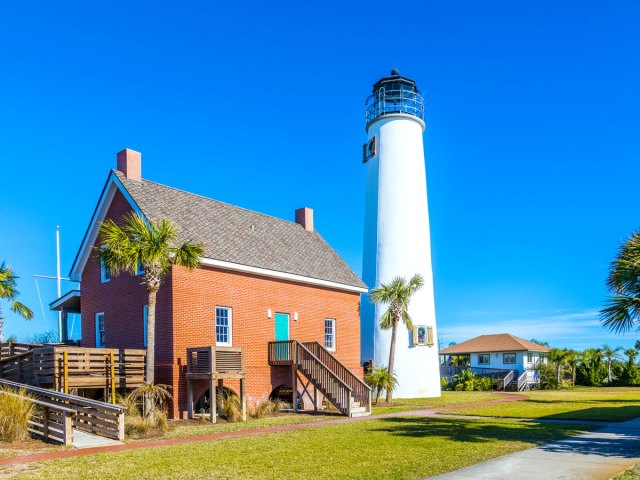
Located on Florida’s “Forgotten Coast,” this appealing 28-mile-long barrier island sits right off the Florida panhandle. Most visitors head to the flashier Destin and Panama City beach destinations when they visit this part of Florida, but if you’re seeking spectacular uncrowded beaches, put St. George Island on your list. You’ll also find bountiful fishing, exceptional kayaking and canoeing, outstanding birding and wildlife viewing, and a feeling of true escape from the high-rises and mega-resorts that are ubiquitous in many other parts of the Sunshine State.
St. George Island and the mainland are part of two extensive, mapped paddling routes, one through fresh water and the other through saltwater: The Florida Paddling Trails Association provides information and maps for freshwater paddling, while the 1,550-mile Florida Circumnavigational Saltwater Paddling Trail meanders along this gorgeous coastline. Accommodations range from a few small hotels to vacation rentals, and the island is surprisingly pet-friendly if your travel companions include a furry one.
Heart Island – New York
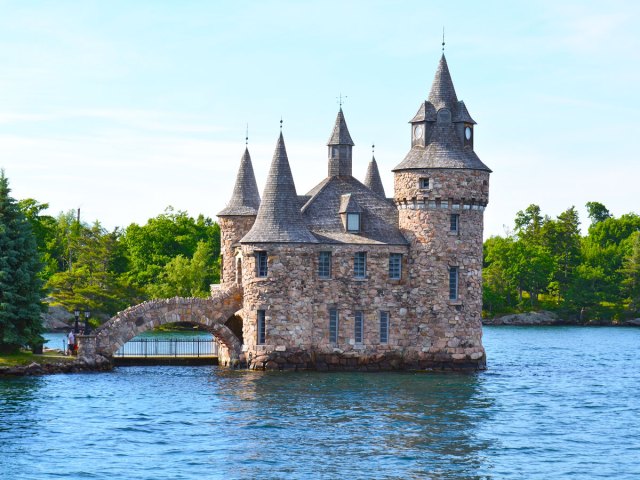
The name of the Thousand Islands archipelago stretching between New York and Ontario actually undersells it. There are 1,864 landmasses and rocky outcroppings in this scenic stretch of the St. Lawrence River. But if you consider yourself a romantic, you’ll probably only have eyes for one of them: Heart Island.
Originally known as Hart Island, it was purchased by Gilded Age hotelier George Boldt, who renamed it “Heart” and began chipping the shoreline to change the island’s shape into an actual heart. In 1900, Boldt had 300 craftsmen begin work on a six-story, Prussian-influenced fairy-tale castle as a gift for his wife, Louisa. She died in 1904 just prior to her castle’s completion, and the heartbroken Boldt abandoned the project, never again to set foot on the island.
In 1977, the Thousand Islands Bridge Authority purchased the ruins and began repairs and restoration. Today, the island and castle are open seasonally to visitors, who arrive by boat tour from either Canada or the United States, or by private watercraft to swoon in the splendor of Boldt’s elaborate tribute to lost love.
Assateague Island – Maryland and Virginia
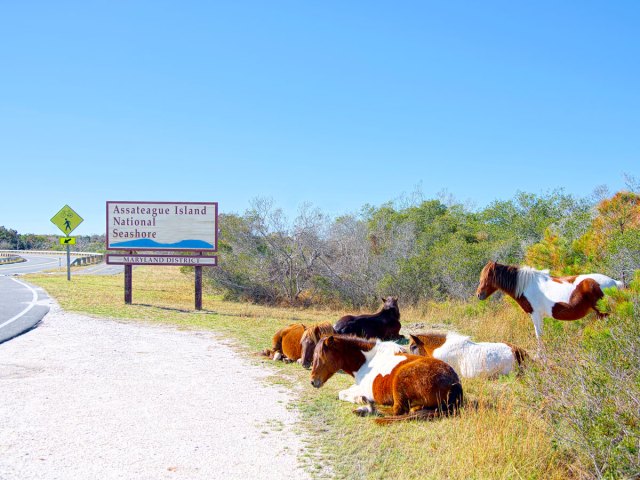
This rugged 37-mile-long barrier island — two-thirds in Maryland, the rest in Virginia — beckons visitors with unspoiled sandy beaches, salt marshes, hiking trails, and numerous campsites. But unlike other islands in the Chesapeake Bay, this one is home to a herd of majestic wild horses, who have roamed there for hundreds of years.
No one is sure how exactly the horses got to Assateague Island. A popular local legend says they swam to the island after surviving the shipwreck of a long-lost Spanish galleon. But other experts have a somewhat less exciting theory: that colonists brought horses to Assateague from the mainland to avoid taxation and simply left them there. Whatever the reason, the feral horses now roam freely on both sides of the island, except for once a summer, when thousands of spectators gather on boats in the bay or on the beach to watch the annual pony swim. “Saltwater cowboys” swim the herd’s ponies across the narrow channel to nearby Chincoteague Island, kicking off a week-long event that celebrates Assateague’s unique history.
Mustang Island – Texas
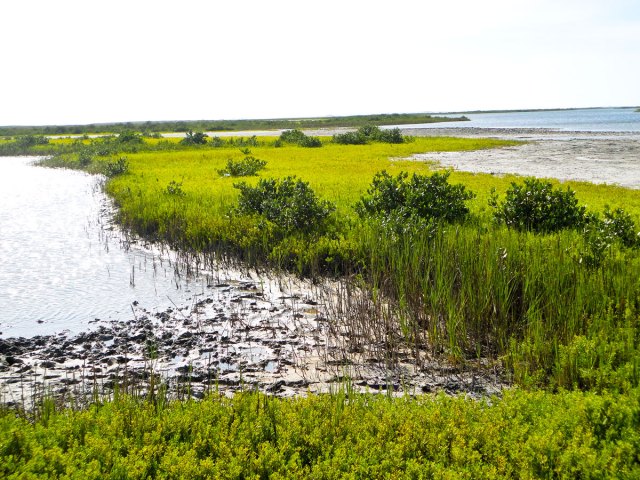
Unlike Padre Island to the south, where spring breakers and summer vacationers party until dawn, Mustang Island offers similar white-sand beaches and a more relaxed atmosphere. This 18-mile-long barrier island along the Texas Gulf Coast near Corpus Christi offers year-round activities such as birding, watersports, fishing, shopping, beachcombing, and paddling. At the island’s north end is Port Aransas, aka the “Fishing Capital of Texas,” where you can book inshore and offshore fishing charters.
Mustang Island State Park covers most of the island’s southern end and offers beaches, fishing, camping, picnicking, hiking, mountain biking, kayaking, geocaching, and kayaking. Adventurous paddlers will enjoy exploring the 20-mile Mustang Island State Park Paddling Trail, which follows the island’s western shoreline. For a truly off-the-beaten-path experience, you can take a short ferry ride from Port Aransas to San José Island. The island is privately owned and closed to vehicles, making it an excellent place for fishing, birding, swimming, and collecting pretty seashells.
Block Island – Rhode Island
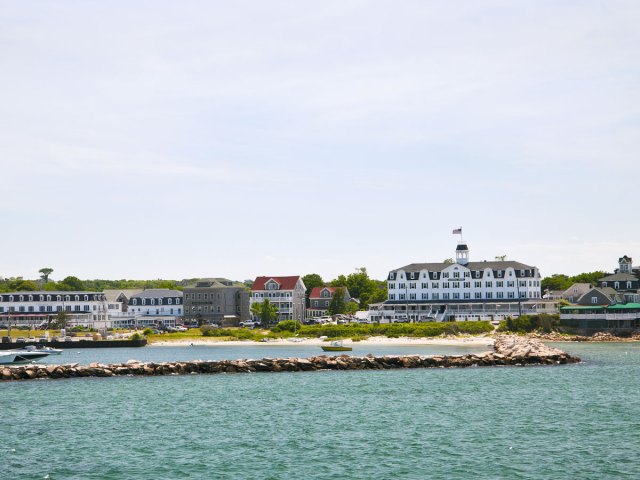
While many head to New York’s Fire Island or Massachusetts’ Martha’s Vineyard and Nantucket, Rhode Island’s tiny Block Island is often overlooked. Block Island lies about 13 miles offshore and is reachable via car, passenger ferries, or plane. This historic island can trace its roots to 16 farming and fishing families who settled here in 1661. In addition to the usual island activities based around the beaches and water, Block Island offers visitors three lighthouses to explore and the Block Island Historical Society Museum.
One of the best ways to get around is by renting a moped or bike. Nature enthusiasts will enjoy exploring Block Island National Wildlife Refuge, and anglers will want to cast their lines into the multiple freshwater ponds and the ocean. The island attracts migratory birds and is a popular spot for birders. A must-see is Mohegan Bluffs, a 200-foot-tall series of bluffs overlooking a secluded beach you can reach by walking carefully down a 141-step staircase.
Orcas Island – Washington
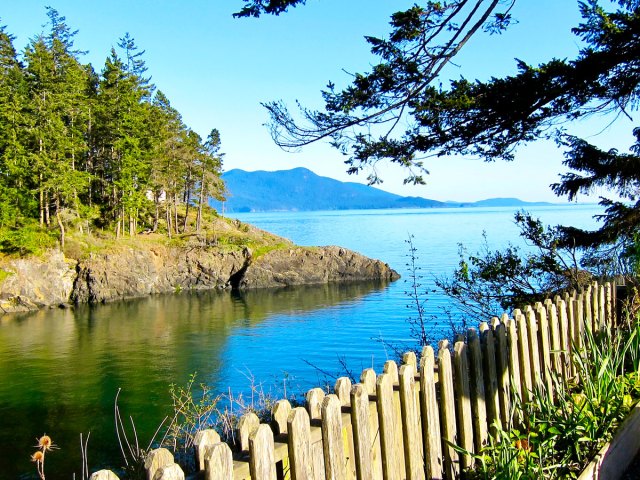
You may have heard of the San Juan Islands, the archipelago of more than 170 islands between Washington state and British Columbia. But while many tourists head to busier Friday Harbor on San Juan Island, the largest in the chain, Orcas Island, can still feel remote and rugged — and certainly worlds away from busy Seattle, which is actually only a 45-minute flight or 4-hour ferry away.
It also has a misleading name. Yes, the island is a whale-watching hotspot. And yes, you may well see orcas (also known as killer whales) in the waters off its coast. In this case, however, the name derives not from the beloved black-and-white cetacean, but rather from Horcasitas — or more accurately, Juan Vicente de Güemes Padilla Horcasitas y Aguayo, the Viceroy of New Spain who dispatched an expedition to the Pacific Northwest in 1791.
While traces of that voyage have mostly vanished from these parts, the Orca Island Historical Museums house many objects that predate it, thanks to the millennia of Indigenous settlements on the island. Besides exploring the island’s laid-back beauty (there are no traffic lights anywhere in the San Juans) and other abundant wildlife, you’ll want to do a tasting tour of Orcas: Many of its 57 square miles are dedicated to farming, to say nothing of the fantastic sea-to-fork feasting options.
Isle Royale – Michigan
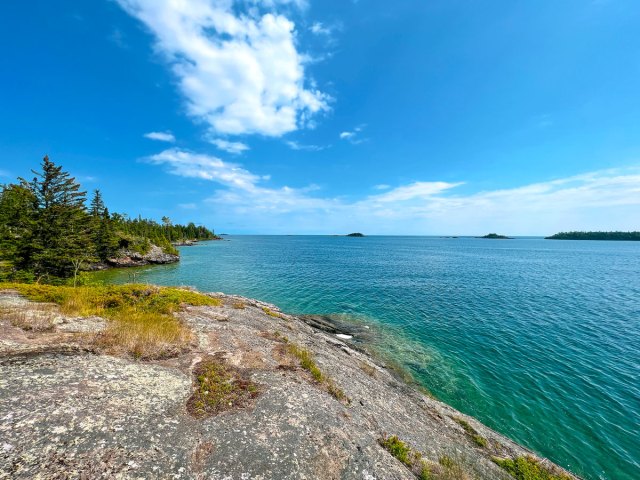
Mackinac may be Michigan’s most famous island, but Isle Royale lies in Lake Superior’s northwest corner, which is just a few miles from the Canadian border and part of Isla Royale National Park. Apart from a few Alaska parks, Isle Royale National Park is the least-visited of all the national parks. This gorgeously rugged island park’s isolation is what keeps visitor numbers low — along with the fact that it’s the only U.S. national park to fully close in winter (November 1 to April 15).
To reach Isle Royale, you’ll want to book a seaplane flight or board a ferry for a three to four-hour trip from Michigan’s Upper Peninsula or Minnesota. You won’t encounter traffic jams here — the only way to get around is by foot or boat, as the park prohibits all wheeled vehicles except wheelchairs. Multiple campgrounds are scattered around the island, and many have easy water access to launch kayaks or canoes. One small lodge exists on the island if you prefer an alternative to camping. Hiking, wildlife viewing, diving, and paddle sports are the top things to do here.
Molokai – Hawaii
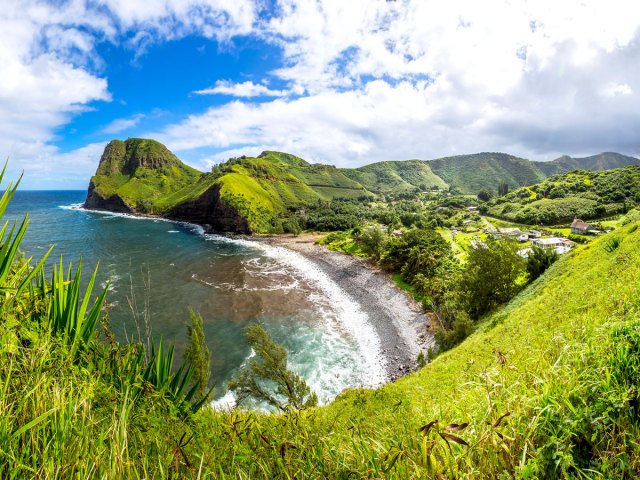
Everyone knows Maui, Oahu, and, of course, the Big Island. But do you know Molokai? America’s smallest county, Kalawao County on the Hawaiian island of Molokai, is only about 12 square miles in area. While most of the island of Molokai is part of Maui County, the tiny Kalaupapa peninsula (where Kalawao County is) received its own jurisdiction due to its history as a leper colony.
The settlement was once the quarantined home of Hawaii’s leprosy patients, which required distinct governance. Today, the county’s population is dwindling, as no new move-ins are allowed. Once Kalawao County’s last few residents have left, Hawaii intends to turn the settlement over to the National Park Service.
On the north shore of Molokai, you’ll find the Kalaupapa Cliffs. Rising an incredible 3,315 feet above the Pacific Ocean, they’re the world’s highest sea cliffs and were likely formed by a portion of the north end of the island collapsing into the sea. Due to the area’s volcanic activity, the Kalaupapa peninsula is one of the island’s most remote locations. Visitors cannot reach the cliffs by car but must hike a 3.5-mile trail with 26 switchbacks and a 2,000-foot descent down the cliffs in order to arrive at Kalaupapa village.
Channel Islands – California
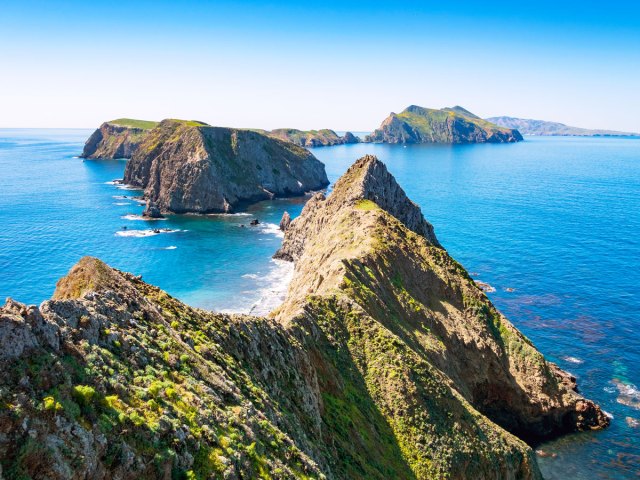
One of the least visited national parks in the U.S., Channel Islands National Park is a marine sanctuary that covers nearly 250,000 acres, half of which are under the ocean. Located off the Southern California coast, near Los Angeles, the park — accessible only by boat or small plane — includes the islands of San Miguel, Santa Rosa, Santa Cruz, Anacapa, and Santa Barbara.
The flora and fauna alone is worth the trek to the park — there are more than 2,000 animal and plant species, and 145 of them aren’t found anywhere else on Earth. Kayaking and snorkeling are popular ways to explore the area; on land, there are miles of rugged hiking trails and pristine beaches for backcountry beach camping.
Kodiak Island – Alaska
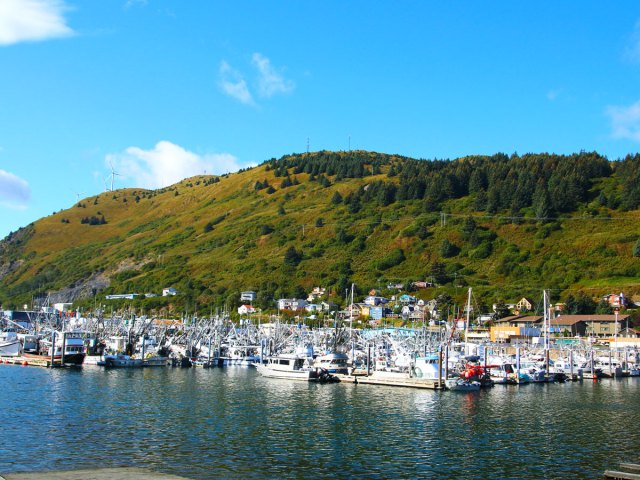
Covering 3,595 square miles, Kodiak Island is the largest island in the U.S. outside of the Hawaiian Islands. The island — which is more than double the size of Rhode Island, the smallest U.S. state — is located in the Gulf of Alaska, about 30 miles across the Shelikof Strait from the Alaska Peninsula.
Chosen by English explorer James Cook in 1778, the island’s name is a derivation of the Alutiiq word for island (qikertaq). Before Cook arrived, Russians explored the island in 1763 and built a settlement where they hunted seals. Today, the fishing industry is a major contributor to the island’s economy. And with a population of about 13,400 people and 3,500 bears, there is around one Kodiak bear for every four people.
More from our network
Daily Passport is part of Inbox Studio, which publishes content that uplifts, informs, and inspires.

